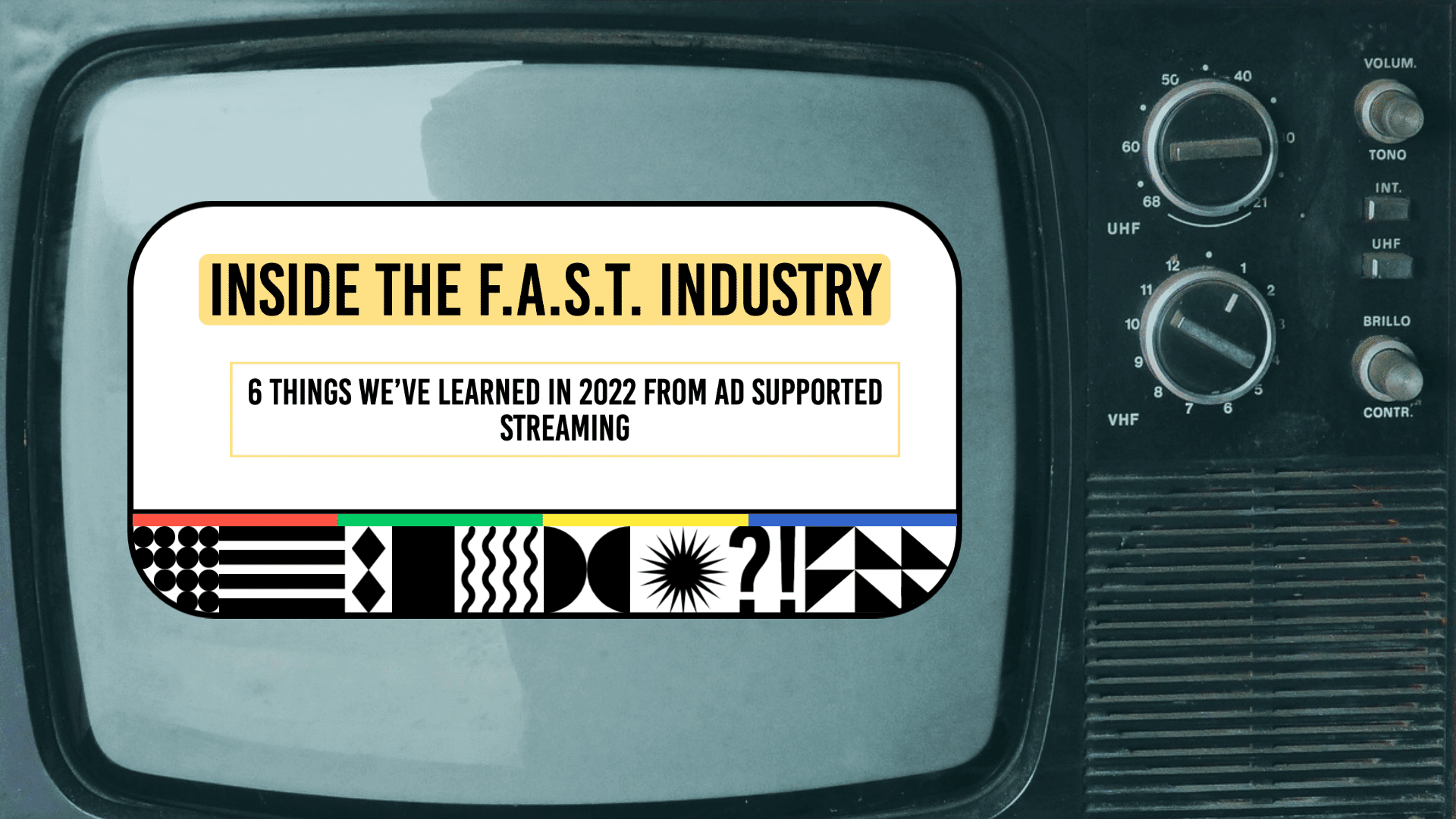The growth of FAST has been staggering. It’s hard to get a sense of how FAST services are really doing by their published subscriber numbers.
Subscriber numbers are the primary metric for judging the popularity of content, but consumption data shows how engaged users are with each platform.
Variety pegs the number of U.S. FAST services providers at 20 (with 1,000 channels) growing soon to 21. The percentage of U.S. TV watchers who say they use a free, ad-supported streaming service like Roku Channel, Pluto TV or Freevee ticked up 9 points to 55% in the first five months of 2022, according to a survey of 3,004 U.S. consumers conducted by Hub Entertainment Research.
Despite fears that the streaming market has reached saturation point, the number of hours spent consuming content has only increased: The average household devotes 122 hours to it each month—a 19% rise from a year prior.
Consumers seeing value in FASTs was fairly high among all five services tested. The Roku Channel stood out with 84% saying they got “excellent” or “good” value from the service, followed by CBS (80%), Freevee (78%), Paramount’s Pluto TV (78%), Fox’s Tubi TV (77%), and Crackle rounding out the bunch with 67%.
“With the remarkable rise of FAST TV, we’re seeing the promise and potential of ad-supported models begin to come to fruition,” says Srinivasan KA, co-founder, Amagi. “Consumers are exhausted by the cost and overwhelming choices of subscription services. Increasingly, they are clamoring for linear, “lean back” viewing experiences across a wide range of genres—and our latest FAST report reflects that clearly.”
Those who are not yet aware of FAST, which is short for Fixed And Streaming Transport, will find that it resembles watching a conventional TV network. Unlike AVOD, which allows viewers to select a title and start watching it from the beginning at any time, FAST sees them choose a channel via an electronic programming grid. The program on that channel is then joined in progress by the viewer.
James Muldrow, vice-president of product management at Comscore, said: “While both ad-supported and subscription-based streaming services are growing in the US, we’re seeing that consumers are being more mindful of their budgets and leaning toward ad-supported services. This makes sense as inflation continues to hit consumers’ wallets. The time is ripe for traditionally subscription-based streaming services such as Netflix to consider launching an ad-supported tier to enhance their growth trajectory.”
What can we learn from the last few years?
There is no correlation between heavy ad loads and viewer satisfaction.
Subscribers to Discovery+ and Hulu with ads are most likely to agree that they see “more ads” on those platforms than users of other streaming services. Despite their perception that the sheer number of ads they see is higher than reasonable, subscribers to those same platforms are also likely to feel that the number of ads on offer is “reasonable”.Consumers report paying the greatest amount of attention to ads on those two platforms. Over the last month, users of Discovery+ and Hulu rated ad attention higher than viewers of other TV services: 51 per cent and 45 per cent respectively gave top ratings (8-10 on a 0-10 scale) to ads, compared with 42/3 % for Beats Music customers.
Because they cost less money, these services might be a better value and thus make users more satisfied with the product.
Ad-supported streaming services provide users with just as much value as ad-free streaming services.
Subscribers to the ad-supported tiers of streaming services are, for the most part, equally likely to feel they get “excellent” or “good” value from their subscription as those who subscribe without ads. Those who subscribe to Discovery+ and Paramount+ with ads actually feel that those services offer excellent or good value, according to HubSpot analysis. What’s more, strong majorities of FAST users believe the same about their service—regardless of platform.
Nothing is more competitive than a free offer.
“Our customers consistently told us they were looking for free movies,” says Chris Yates, general manager, on demand, Redbox. Viewers want to watch something that’s a little less taxing to find, choose and, watch. Essentially FAST doesn’t generate the kind of buyer’s remorse you might get by picking the wrong thing to watch on a pay-per-view or SVOD service. FAST services are really replicating the old TV experience of free programmed content. “It’s a behavior that everyone knows from the cable days.”
FAST Platforms have Tons of Millenials
Many brand advertisers are finding that FAST platforms are the best way to reach coveted demos like millennials. These audiences tend to skew more heavily toward millennials, who have significant buying power and who make up the largest cohort of parents.
There’s a big opportunity for children’s brands to reach desired audiences through FAST advertising, and this explains why kid-focused channels can be found across many platforms like Pluto TV and The Roku Channel.
Dynamic Brand insertion is huge. DBI is a technology that allows advertisers to swap out ad creatives in linear, live or video-on-demand, content.
Video ad targeting allows advertisers to leverage the deep audience insights that are available, creating more targeted ads for each consumer. Targeting consumers based on the content they consume, their location or other factors can help advertisers reach potential customers more effectively—which results in higher conversion rates.
Artificial Intelligence (AI) wil rule. Even if it’s not really AI, and it’s not going to take over the world, or make you breakfast in the morning, it’s still cool. For example GumGum, has an AI technology called Verity which analyzes video content to get contextual categorizations based on the IAB metadata taxonomy which has hundreds of categories, up to four levels deep.
“We pick the best categories from that taxonomy with (the highest) confidence level and return that back to the client,” says GumGum CTO Ken Weiner. GumGum’s contextual analysis is used for brand safety so ads aren’t placed in settings which aren’t congruent with the product’s values. Some of their customers use Verity as a way to normalize how all their editors tag content, so there’s consistency in their metadata tagging.
Over the past couple of years, streaming services have begun to look a lot more like conventional television. Netflix isn’t the only service with an ad-supported tier. The default option for Universal’s Peacock service is a free ad-supported tier, with premium alternatives available for those willing to pay. Paramount+ has an ad-supported “Essential Plan.” Hulu has both ad-supported and ad-free tiers. HBO Max has seen great success with its ad-supported tier. Even Disney+ plans to add one. I fully expect this is the future for the next decade or so.
Consumers have more streaming options than ever before, and they are carefully choosing which services to subscribe to.
AMC joined the FAST space in 2020. According to Lindsay Stewart, director of digital distribution and partnerships for AMC Networks, FAST quickly evolved for the network as a fundamental part of its dynamic distribution ecosystem, bringing content and advertising partners to viewers wherever they are.
According to Stewart, “We’ve seen our audience shift over the past few years from linear television to on-demand and streaming platforms. The FAST technology allows us to deliver our content in a way that’s more engaging than ever before.”
“For us, it really helps us extend our brands,” she said. “It’s helped us find new ways to bring the brands people know in our other ecosystems to this really important space. We now have 13 channels across six partners, so it’s been a great way for us to evolve and bring new life to our content while engaging with the fans.”










